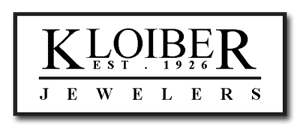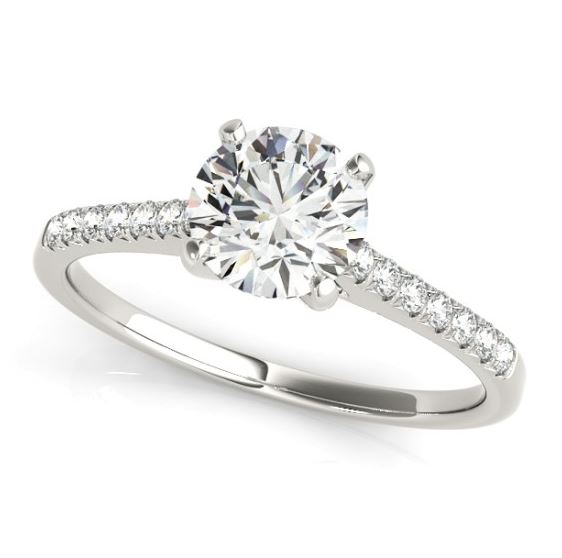Head, halo, shoulder… These may seem like common words to you, but they take on a whole new meaning when it comes to engagement rings. Besides familiarizing yourself with the 4 C’s, you should also consider studying up on your ring terminology. When shopping for an engagement ring, knowing all the correct terms can help you accurately describe exactly what you’re looking for, so that you walk away with the perfect ring. Of course, an experienced jeweler will be there to guide you along the way, but just in case you want some additional reference, here are some words you’ll most likely encounter when discussing engagement rings:
Center Stone: One of the easiest terms to remember, a center stone is simply the main gemstone featured in a ring. Most people select a diamond as their center gemstone, but sapphires and rubies are both excellent alternatives if you want a more colorful engagement ring.
Accent Stone: Another easy one to remember, accent stones are the gemstones (typically diamonds) on the band. Deciding whether or not you want accent gemstones on your engagement ring is a personal preference. Some feel that they nicely compliment the center gemstone while others believe that accent gemstones can take attention away from the center gem.
Halo: Part of one of the more recent engagement ring trends, halos feature a border of smaller gemstones (again, usually diamonds) that surround the center gemstone. A halo’s ability to make the center gemstone appear larger is one of the reasons why this style is so popular.
Prong: The security system of engagement rings, prongs are the little metal claws that hold the gemstones in place. Typically, a ring will have either four or six prongs surrounding the center gemstone. The more prongs, the more secure your gemstone will be.
Hallmark/Engraving: When looking closely at the inside of a ring, you’ll notice a small stamp that indicates the metal purity/type. This is the hallmark of a ring. You may also notice a manufacturer’s mark that states where the ring was made.
Head: The head is the top portion of a ring that holds the center gemstone. Another name for a ring’s head is its setting. There are a variety of different styled heads including prong and basket, and they can sit low or high, depending on the wearer’s preference.
Gallery: The area underneath the center gemstone is called the gallery. This is the part of the ring that is visible from the side view. Rings with a large center gemstone typically feature a hollow gallery so that the maximum amount of light is able to reach the gemstone.
Shank: Also referred to as the band, the shank is the round section of the ring that fits around the finger.
Shoulder: The shoulder is the area between the shank and the setting/head.




